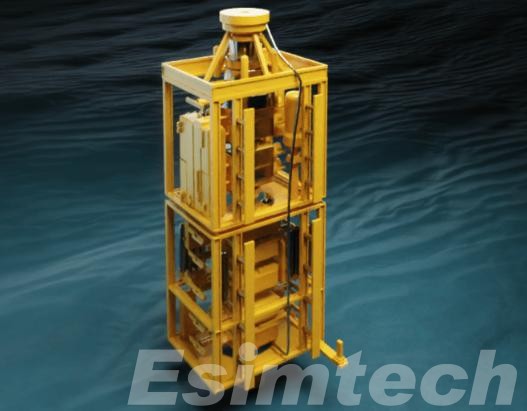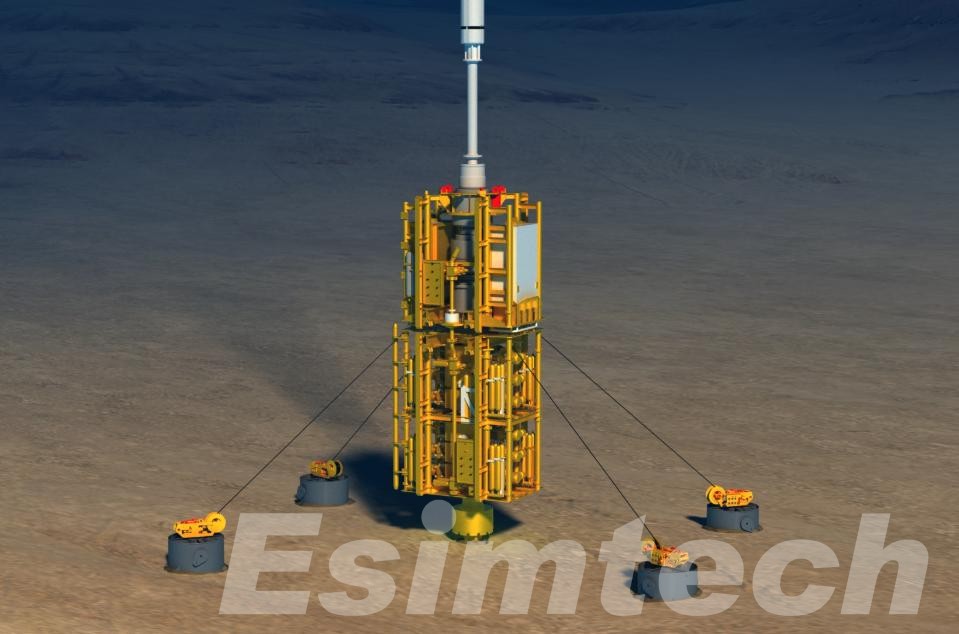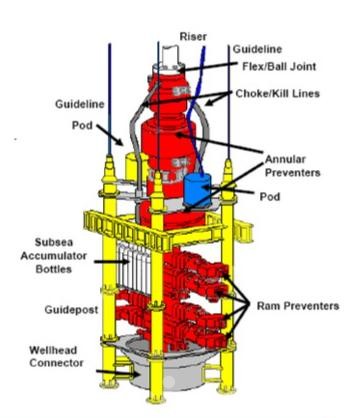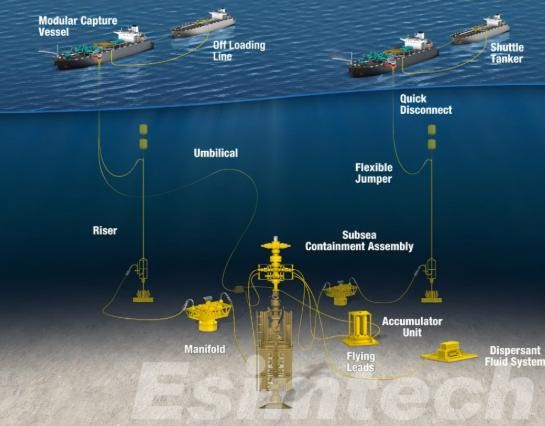Explaining the Function and Importance of Subsea BOPs in Offshore Drilling
The prevention of blowouts during offshore drilling operations is both multifaceted and extremely difficult. As with any drill activity, there are safety protocols in place to avoid unfortunate accidents, but they can be very costly in terms of time and money when dealing with high-pressure subsea wells, making safety essential for success. This article describes the subsea BOP system, which acts as a vital element in deep-sea oil extraction endeavors, discussing its operation mechanism using subsea BOP components, along with highlighting its vital role concerning injuries and fatalities in offshore drilling incidents, while also noting recent technological developments regarding subsea BOP control systems.
How Does a Subsea Blowout Preventer Work?

A subsea blowout preventer (BOP) is an important safety device that prevents the uncontrolled release of oil and gas from offshore wells. As the primary preventive measure against blowouts during drilling, completion, or intervention operations, it is located on the seabed above the wellhead.
The subsea BOP stack combines mechanical and hydraulic systems to operate. During normal drilling operations, the well is open for drilling fluids to flow. If there is a sudden surge in pressure due to a kick, however, the subsea BOP control system activates emergency measures. Sealing mechanisms including hydraulically actuated annular and ram preventers activate:
- Annular Preventers – Flexible rings for gripping around either a drill pipe or wellbore.
- Ram Preventers – Steel blocks that have special rams which shut off flow with additional capabilities to grip and shear pipes if required.
Redundant control pods maintain system reliability while accumulators keep high-pressure reserves of hydraulic fluid ready for rapid responds. Autonomous deadman or autoshear systems provide independence by automatically activating the BOP in case communication with surface systems is lost.
As a result of its design flexibility to adapt at various depths underwater, it can react almost immediately by sealing explosive potential holes which protects personnel and equipment involved in deepwater high risk drilling as well as mitigating impact on marine ecosystems.
Key Components of a Subsea BOP Stack
A subsea BOP stack is one of the most complex systems that require precision machining to achieve accurate balance and control needed for well control in offshore drilling. Every component must function flawlessly to avert blowouts and ensure safe operational conditions during drilling. Below are the essential elements of a typical subsea blowout preventer system:
1. Annular Preventers
These devices are large in diameter, roughly shaped like a ring with an integrated robust rubber seal that can either close on the drill pipes, casing, or even an open hole bore. Unlike fixed rams, annular preventers provide flexibility, allowing them to seal various pipe sizes. They often serve as primary preventers to overbalance formation pressure (kick).
2. Ram Preventers
Ram-type BOPs close off the well with hardened steel blocks and are divided into three main groups:
Pipe Rams – Close around a given pipeline diameter and hence lock-in the space between the pipe and hole.
Blind Rams – Used to close the entire wellbore when no pipe is attached.
Shear Rams – Can shut drilling pipes into sections during critical situations, then trap gas below, thus averting blowing out.

3. Control Pods
The hydraulic and electronic subsystem of each subsea BOP incorporates control pods that serve to actuate the preventers. It is common practice for these pods to be designed with redundancy (usually blue and yellow) for critical failure situations. These pods receive signals from surface systems through umbilicals or acoustically.
4. Hydraulic Accumulators
These accumulators are essential in providing instant access to high-pressure fluids to enable the activation of subsea BOP rams during emergencies. Since subsea BOPs are required to function in a scenario where powers from the surface are lost, these devices’ accumulators must be pre-charged with sufficient pressure guaranteed during multiple closures.
5. Wellhead Connector
This device serves as a robust clamp that grips onto the subsea wellhead, thus holding the BOP stack securely while also maintaining a pressure-tight seal. It is subjected to a myriad of severe acceleration forces, yet it should still be possible to rapidly detach it when needed.
6. Marine Riser Interface
Drilling rigs are connected using marine risers, which not only drill but also channel drilling fluids back to the surface. Various specialized adapters and flex joints are used along with other systems in place needed such as rig movement.
Each component faces the need for reliability under corrosive seawater, heightened pressure, extreme temperatures, and rigorously harsh operating environments. Subsea BOP stacks have become crucial components in offshore drilling due to continuous refinement being witnessed, made possible by real-time monitoring alongside modern advancements made through automation and materials technologies.

Why Are Subsea BOPs So Important?
Subsea blowout preventers (BOPs) play a pivotal role in offshore drilling for three purposes: safety concerns, conservation of the environment, and reliability of operations.
1. Prevention of Potential Blowouts
An uncontrolled release of oil or gas, known as a blowout, brings with it the risk of explosions, fire outbreaks, and threats to human life. The subsea BOP stack acts as a primary safety barrier that, during emergencies, seals the well. Without this essential structure, any sudden increase in pressure would result in disasters similar to what was witnessed in 2010 on Deepwater Horizon when the BOP failure triggered one of history’s worst oil spills.
2. Protection of Marine Ecosystems
Coastal communities and their economies suffer owing to oil spills, which cause huge destruction to marine life. A fully operational subsea BOP minimizes these damages by ensuring wellbore leakage cannot occur instantly through isolation. Protective agencies like the U.S Bureau of Safety and Environmental Enforcement BSEE require rigorous testing under extreme conditions so that BOPs can be guaranteed reliable beyond doubt.
3. Preserving Operational Continuity For Business
Bops serve purposes beyond just dealing with emergencies, where they also allow safe drilling and testing along with routine maintenance checkups. Decrease manual difficulties due to interruptions, allowing for better precision regarding the pressure control management subsystem, thus greatly improving productive time.
To summarize, subsea BOPs help maintain the safety of Offshore Drilling operations. These factors shape the economic sustainability of deepwater projects and also influence the lives of workers on-site and environmental safety. Advancements in the technologies associated with BOPs are required for meeting their growing market demands, especially for deeper sea-drilling, which is always wrought with greater challenges.

Final Thought
The subsea BOP is vital to managing safety and preventing blowouts during offshore drilling, safeguarding human life and the environment. With advancements in control systems and stack designs for deeper water drilling, these devices remain dependable even in extreme conditions.
Having strict maintenance protocols invested into along with advanced BOP technology is crucial for producing energy offshore while maintaining safety and sustainability.
With an improved understanding of the functions, parts, and significance of BOP stacks, further improvements can be made to well control, leading to disasters being avoided altogether.
